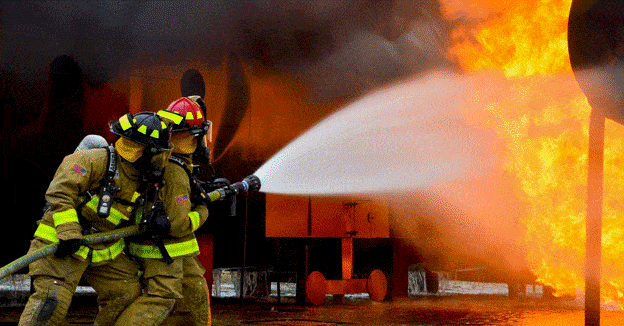Deadly fires in South Korea have been steadily increasing in the workplace over the past few decades. Another deadly blaze was reported on April 29, 2020, in the city of Icheon, about 80km south-east of Seoul. Icheon is the home for chip manufacturers and retailers’ storage facilities. A sudden blaze at a warehouse site took 38 lives and 10 more people were hospitalized.
About 78 employees from nine different companies were working inside a four-story cold-storage warehouse. Some of these employers were laying tiles and insulating cargo elevators while others were coating underground walls with polyurethane foam on the second underground level. The place was filled with highly flammable vapors from solvents used by staff to dissolve polyurethane.
Around 1:32 local time, the vapors in the air caught fire from an unknown source and turned into a blaze. According to the firefighters, “The fire seems to have spread extremely quickly, with the victims apparently having been unable to evacuate at all during the fire”.
“It is regrettable that a similar accident reoccurred. It means we’ve not learned the lesson from previous accidents,” stated President of South Korea Moon Jae regarding the recent fire. Statements such as these are becoming both familiar and alarming to many in the country. Furthermore, upon investigation, it was determined that the warehouse did not have sprinklers or any other vital fire protection equipment.
Polyurethane foam is a cheap and lightweight but efficient insulator. It can also easily catch fire and release extremely toxic gases into the environment. Processes involving the spraying of polyurethanes pose a high risk to the workplace and need to be handled with proper safety precautions. While spraying polyurethane foam, it generates isocyanate vapors. These vapors may remain in a building until properly ventilated and entirely cleaned. When these vapors come into contact with a source of ignition, such as cutting or welding torches, it results in a deadly blaze along with the emission of toxic gases. Off-gassing from polyurethane spraying is highly flammable, so proper ventilation and precautions are necessary.
The following are various best practices that could help to avoid similar incidents and ensure safety in the workplace.
- Conducting safety inspection programs
- Handling materials safely
- Carrying out fire drills at least once in a year
- Testing fire alarms periodically
- Creating a fire evacuation and emergency plan
- Ensuring the installation of navigation signs and emergency exits
Fires affect thousands of workplaces every year, resulting in injury and property damage. By implementing a fire prevention and preparedness program, organizations can help avoid injuries to their employees and costly damages. An ounce of prevention goes a long way to help avoid an unwelcome fire emergency.
Book Your Consultation Now!
AUTHOR BIO

Satya is the resident Chemical Engineer here at SafetyStratus. She is focused on supporting and improving the Chemical Inventory and related products and services for the SafetyStratus platform. She has recently completed her master’s degree in Chemical Engineering. While relatively new to the business world, she has conducted cutting edge research, participated in several notable projects, and worked at a refinery, a steel processing plant, and, most notably, for the Center of Atomic Research. She is eager to use her skills and talents to share knowledge with the broader EHS community.
Follow @Satya: Linkedin

